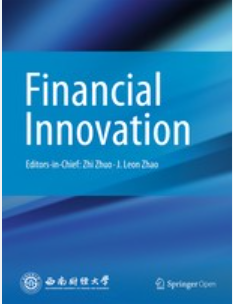基于缩编的高频金融交易量风险指标
IF 7.2
1区 经济学
Q1 BUSINESS, FINANCE
引用次数: 0
摘要
在股票市场中,交易量是一个关键变量,是衡量证券流动性水平的一个指标。为了评估流动性风险敞口,我们在波动的时间框架内研究交易量缩减的过程和暴跌恢复的措施。这些移动时间窗口使我们的金融指标不会受到股票市场开盘和收盘时大量交易量的影响。实证研究的对象是特斯拉、Netflix 和苹果公司的高频财务交易量,时间跨度为 2022 年 4 月至 9 月。首先,我们使用半马尔可夫模型(即加权指数半马尔可夫链(WISMC)模型)对每只股票的交易量时间序列进行建模。其次,我们计算了基于实际缩减和合成缩减的风险指标,以进行比较。研究结果表明,根据所选时间窗口的不同,我们的风险指标在统计上具有不同的分布。在全球范围内,就所有资产而言,根据 WISMC 模型得出的数据计算出的金融风险指标在库尔贝-莱伯勒离差方面与真实指标非常接近。本文章由计算机程序翻译,如有差异,请以英文原文为准。
Drawdown-based risk indicators for high-frequency financial volumes
In stock markets, trading volumes serve as a crucial variable, acting as a measure for a security’s liquidity level. To evaluate liquidity risk exposure, we examine the process of volume drawdown and measures of crash-recovery within fluctuating time frames. These moving time windows shield our financial indicators from being affected by the massive transaction volume, a characteristic of the opening and closing of stock markets. The empirical study is conducted on the high-frequency financial volumes of Tesla, Netflix, and Apple, spanning from April to September 2022. First, we model the financial volume time series for each stock using a semi-Markov model, known as the weighted-indexed semi-Markov chain (WISMC) model. Second, we calculate both real and synthetic drawdown-based risk indicators for comparison purposes. The findings reveal that our risk measures possess statistically different distributions, contingent on the selected time windows. On a global scale, for all assets, financial risk indicators calculated on data derived from the WISMC model closely align with the real ones in terms of Kullback–Leibler divergence.
求助全文
通过发布文献求助,成功后即可免费获取论文全文。
去求助
来源期刊

Financial Innovation
Economics, Econometrics and Finance-Finance
CiteScore
11.40
自引率
11.90%
发文量
95
审稿时长
5 weeks
期刊介绍:
Financial Innovation (FIN), a Springer OA journal sponsored by Southwestern University of Finance and Economics, serves as a global academic platform for sharing research findings in all aspects of financial innovation during the electronic business era. It facilitates interactions among researchers, policymakers, and practitioners, focusing on new financial instruments, technologies, markets, and institutions. Emphasizing emerging financial products enabled by disruptive technologies, FIN publishes high-quality academic and practical papers. The journal is peer-reviewed, indexed in SSCI, Scopus, Google Scholar, CNKI, CQVIP, and more.
 求助内容:
求助内容: 应助结果提醒方式:
应助结果提醒方式:


